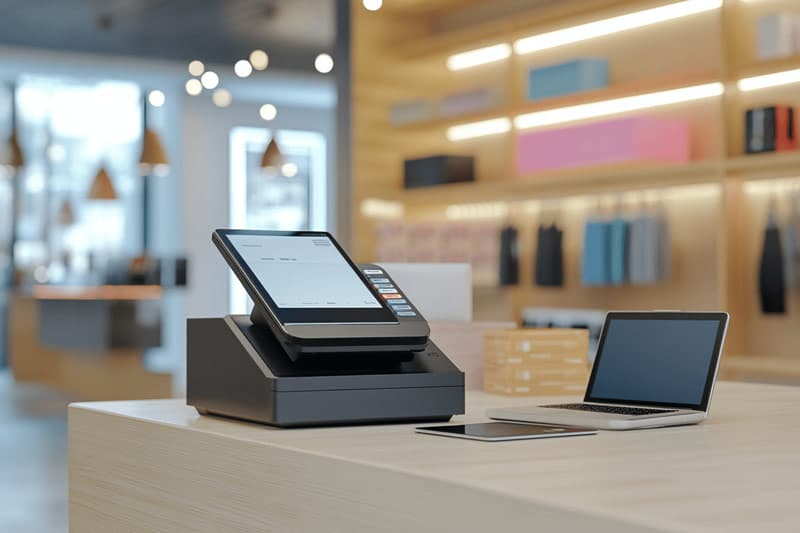Fraud has always been one of the defining challenges for merchants, especially those in high-risk industries with payment processing needs like CBD, firearms, travel, nutraceuticals and subscription services. As payment options proliferate and e-commerce continues to expand internationally, fraudsters are developing newer and more complex options to exploit weaknesses in digital transactions. For years, high-risk payment processing relied on systems that were reactant—flagging unwanted charges post-purchase and responding to chargebacks without any clues as to whether one transaction was more suspicious than another. These days, however, payment processors are adopting artificial intelligence (AI) to change the game. With real-time fraud detection and predictive capabilities, AI enables merchants to stop fraud before it impacts their revenue or reputation. For those merchants already dealing with high chargeback ratios and inquisitions from processors trying to limit their risk exposure, utilizing AI technology is more than a convenience; it’s a necessary step for survival.
The Level of Fraud in High-Risk Industries
Merchants in high-risk industries experience fraud at rates that far exceed other, more traditional verticals. Subscription models involving nutraceuticals or online coaching see many customers disputing or chargeback against transactions[1]. CBD or firearms retailers must contend with criminals who use stolen credit cards to purchase high-ticket items. Travel merchants face friendly fraud with customers disputing trips they’ve booked after payment. No matter the industry, high chargeback ratios result in account freezes or terminations with processors. Using traditional fraud detection strategies is not enough to combat these issues. That’s why any technology rooted in AI is becoming the most trusted method for high-risk industries with payment processing needs.
What Is AI Fraud Detection?
AI fraud detection refers to machine learning tools, neural networks and predictive analytics to identify potentially fraudulent transactions. Instead of standard systems that rely on pre-established standards (like putting a hold on any credit card transaction exceeding $800), AI-based systems adjust and learn based on a massive quantity of processed transaction data. They learn what’s considered potentially legitimate or fraudulent and evolve over time to improve accuracy. For high-risk merchants processing payments, AI-based systems offer evolving protection that increases over time based on the latest fraud strategies.
Why AI Is Important for High-Risk Payment Processing
Where standard prevention relies on real-time manual reviews and arbitrary restrictions, AI acts in real time without customer friction. Where thousands of data points can be assessed per transaction, merchants can quickly approve legitimate purchases while denying high-risk activity. In industries where a single additional step in the processing can turn a customer away forever, this kind of solution offers safety and convenience. For those merchants navigating the delicate balance of being high-risk but still operating a day-to-day business, AI is a requirement for long-term stability[2].
How AI Fraud Detection Influences Chargebacks
Chargebacks don’t just decrease profitability; they jeopardize a merchant’s ability to have sustainable payment processing. Merchants need to pay close attention to chargeback ratios since credit card companies set thresholds; exceeding them means additional fees or even account termination. Thus, every chargeback avoided through AI is another reinforcement for remaining in business. Using AI fraud detection means access to data that predicts which transactions are likely to receive pushback—even after initial approval—as well as a proactive approach that avoids chargebacks altogether. Merchants who embrace AI report measurable reductions in chargeback ratios, which improves standing with payment processors and decreases costs across operations[3].
AI Helps with Regulatory Compliance for High-Risk Payments
Compliance is critical for high-risk industries; businesses need to demonstrate that they’re employing sufficient measures for fraud prevention and response. From health-related businesses to those charging firearms or banking ventures, there must be transparency around what efforts worked—and didn’t—when charges came through. AI provides extensive reporting and audit trails that explain how a transaction was flagged or rejected. This type of transparency bolsters trust with processors, banks, and compliance regulators. Thus, AI offers enhanced protection beyond the typical comprehensive fraud prevention scheme.
Future of AI Fraud Detection for High-Risk Merchants
The use of AI will only expand as the technological universe evolves. Predictive algorithms will be even more precise when processing millions upon millions of points. Cross integration with biometric authentication will occur more often to determine valid users from potential fraudsters seamlessly. Blockchain technology may even get involved down the road to enhance protection even further. For high-risk merchants reliant upon avoiding fraudulent activities at all costs—and who want to stay ahead of trends—adopting AI technology provides merchants with quick evolutions[4].
Six Ways AI Enhances Fraud Prevention for High-Risk Payment Processing
Transaction Monitoring in Real Time
AI analyzes transactions instantaneously and flags potentially suspicious behaviors before they go through. This transaction monitoring enables merchants to stop fraudulent purchases from going through in the first place.
Behavioral Analysis
AI considers contextual elements about a customer—device type, download history, geolocation—to recognize discrepancies that may seem fraudulent even if transaction details are correct.
Chargeback Anticipation and Prevention
AI helps assess which transactions are likely to end in dispute so merchants can proactively approach a customer with resources.
Fewer False Positives
AI considers various elements simultaneously when making assessments; thus, it can decrease the likelihood that legitimate transactions are flagged.
Scalability Across Environments
AI tools can be used for ecommerce sites, mobile apps, and in-person payments to ensure universal protection across environments.
Machine Learning Development
AI learns as it goes; even if a fraud attempt fails or is successful, it assesses the transaction afterward to better detect future efforts.
FAQ
Q: What is AI fraud detection in payment processing?
A: AI fraud detection uses machine learning and predictive analytics to identify potentially fraudulent transactions in real-time while simultaneously evolving learning as tactics improve.
Q: Why is AI particularly vital for high-risk merchants?
A: High-risk merchants have much higher than average instances of chargebacks—meaning that their fraud ratio is exponentially higher than low-risk merchants. AI provides real-time protective measures that traditional tools cannot[5].
Q: How does AI reduce chargebacks?
A: By denying transactions that are fraudulent before they go through—and anticipating what transactions are likely going to result in chargebacks—merchants can maintain healthy ratios.
Q: Does AI fraud detection provide friction for legitimate customers?
A: No; if anything, it decreases false positives by operating on multiple data points simultaneously ensuring positive customer experiences while protecting security.
Q: What advances will shape the future of AI fraud prevention?
A: Behavioral biometrics, blockchain connections, and more precise predictive algorithms will shape the next wave of developments in fraud prevention through AI.
Sources
- Visa. “Fraud Detection Solutions.” Accessed August 2025.
- Mastercard. “Fraud and Security Solutions.” Accessed August 2025.
- PYMNTS. “AI in Fraud Prevention for Payments.” Accessed August 2025.
- CardFellow. “High-Risk Merchant Accounts Explained.” Accessed August 2025.
- PCI Security Standards Council. “PCI DSS Overview.” Accessed August 2025.











